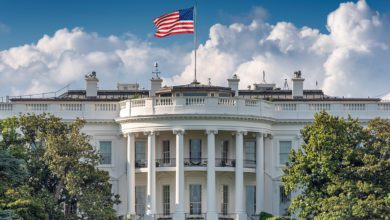
For IT professionals, there’s no evidence that President Donald Trump is reducing the risk that their job might go offshore.
For instance, Unum Group IT employees received a memo in August about its agreement with HCL, an India-based IT services firm. The memo told workers at this Chattanooga, Tenn., based insurer, that the “partnership” would lead to advance capabilities and relieve pressure on some teams. The memo described the affected technologies.
“The services and functions we plan to transition include all Network Operations, Application Certification & Distribution and Service Desk functions, as well as partial services in Hosting, Middleware, End-user devices, Database Administration, and Storage,” the memo said.
Unum told employees that there would be a “handful of job eliminations” and that some employees would get offers to work with HCL. A spokeswoman for Unum said that the firm “eliminated three roles as a result” of the contract, with no others planned at this time.
But one employee source says it’s imaginable that a large number employees may be impacted, either through layoff, being transferred to the contractor or leaving voluntarily. Estimates are difficult to get.
Offshore outsourcing firms, who are the largest users of H-1B visas, often use visa workers to facilitate the transfer of work. The Trump administration has criticized the visa program for this reason. Analysts have long argued that increasing visa wages, and changing the way visas are distributed, may hurt the ability IT services firms to use visa workers in offshoring.
But the administration, as well as Congress, have not taken any major actions on the visa program. The offshore outsourcing industry is breathing easier, but it is still seeing changes.
The rate of growth among the largest India IT services firms has been consistently declining for the last eight quarters, according Jimit Arora leads Everest Group’s IT Services research practice.
In the second quarter of 2014, the top Indian offshore providers posted a growth rate of 13 percent. It was 6 percent in the comparable quarter in 2017, reported Everest.
Arora said the decline in revenue growth is due to a shift in the offshore model. IT offshoring grew because overseas firms provided services at lesser cost, thanks to lower wages. This arbitrage model represents 85 percent of this market today, and it continues to grow at roughly four to five percent.
But the fastest growing part of the outsourcing market is related to digital services, such as building mobile applications. This only represents 15 percent but is growing at a rate of 25 percent, said Arora.
The offshore firms are trying to figure out how to “pivot to this digital model which requires more expertise onshore,” said Arora.
An example of a digital services is a pizza chain firm shifting its delivery business away from a call center to a mobile application.
A shift to digital services requires a greater U.S. presence. It is a type of development tied to a customer’s revenue generating strategy. Expertise, not low wages, matters the most. But increasing the U.S. workforce is also a hedge against changes that may make it harder to get an H-1B visa worker.
In June, India-based Wipro announced that local hires now form more than 50 percent of its U.S. workforce, which it put at 14,000. In May, Infosys said it would hire 10,000 U.S. workers in the next two years. The firm employed about 20,000 in the U.S. in 2016, according to court records.
For sure, India’s IT firms worry about the political climate in the United States and restrictions on the H-1B visa. Quarterly financial calls have mentioned “visa-less” strategies. But those worries, acute when Trump took office, are less so now, said Arora.
The Trump administration may be giving – intentionally or otherwise – this industry time to prepare for changes, if they happen.
Before Trump took office, IEEE-USA argued that he had authority to change the visa lottery. Instead of a random distribution, firms that paid higher wages would get priority, as would non-dependent H-1B firms.
A firm with 51 or more full-time workers, of whom 15 percent or more are H-1B workers, is “dependent.” That includes offshore outsourcing firms, as well as some domestic firms, notably Facebook.
But Trump took no action prior to the last 1 April visa lottery. A few weeks after the lottery, the administration promise to replace it. A senior administration official told reporters, at a background briefing in mid-April, that the top H-1B recipients were gaming the system “by putting extra tickets in the lottery raffle, if you will.”
The Trump administration has applied more scrutiny to visa petitions, especially those paying the lowest wages. But that’s extent of its reform push.
“It is clear that momentum on H-1B reform has stalled in both Congress and the White House,” said Russell Harrison, director of governmental relations for the IEEE-USA. “We do expect some reforms from the administration, but it isn’t clear how significant they will be. Small tweaks to existing policy seem more likely than sweeping changes, which means the lottery will probably continue. Congressional action is less likely, but H-1B reform amendments to other bills are still possible,” he said.
“Everything depends on what legislators hear from their constituents – if voters complain about H-1B abuse, Washington will listen,” said Harrison.
In August, Trump came out in support of Senate legislation, sponsored by Republican Senators David Perdue and Tom Cotton, that would shift to merit-based permanent immigration, but that reform doesn’t apply to H-1B visa workers.
The IT industry believes that the Trump administration does not have the authority to make administrative changes to the lottery that can survive a court challenge. It believes only Congress can end the lottery.
As it stands today, the IT services industry is expecting an H-1B lottery next April for the 2019 fiscal year.






